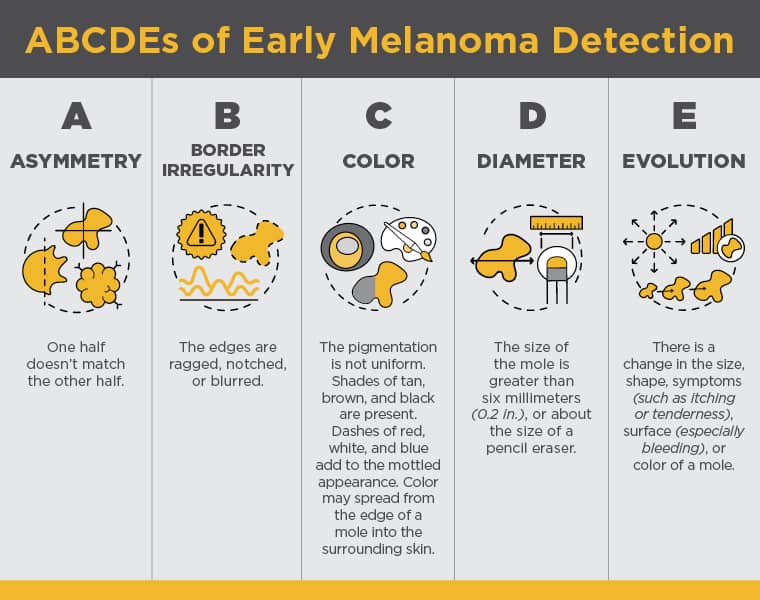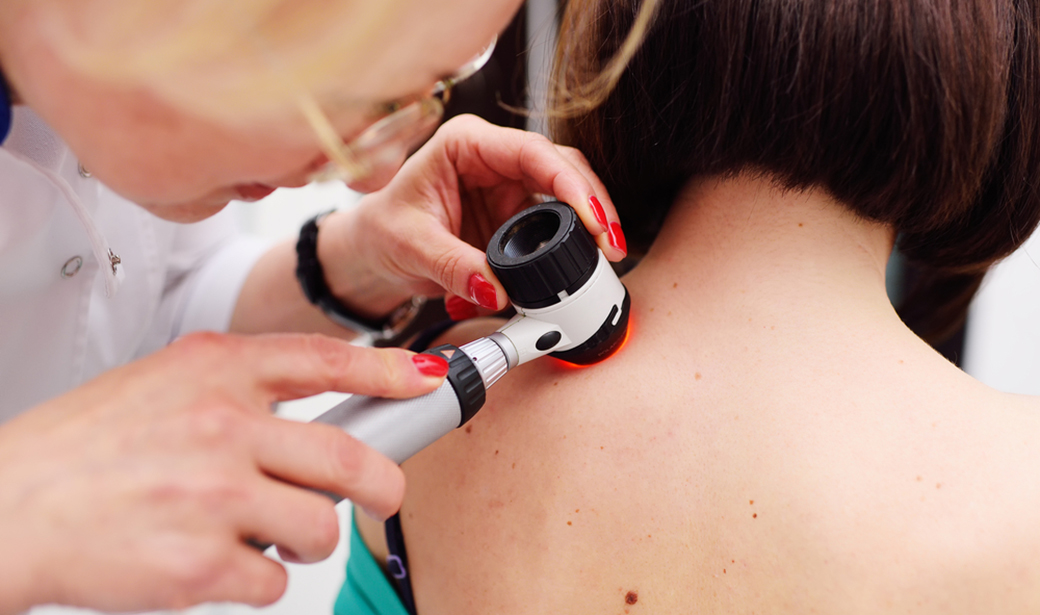There are a few simple steps you can take to protect your skin from the sun’s damaging rays while still enjoying the outdoor activities you love.

"There are many ways to protect your skin from the sun and reduce your skin cancer risk including sun avoidance, sun protective clothing, and sunscreen," Emily Smith, MD, a dermatologist at MU Health Care said.
Preventing skin cancer isn't always possible. But being alert for new spots or skin growths and having your doctor check your skin regularly may help find skin cancer early when it can be more easily treated. Smith recommends the following ways you can protect yourself from the sun.
Protect your skin
- Stay out of the sun during the peak hours of UV radiation, from 10 a.m. to 4 p.m.
- Wear protective clothing:
- Wide-brimmed hats that protect the face and neck
- Loose-fitting long-sleeved shirts and pants that covers as much of the skin as possible
- Clothing that has sun protection factor (SPF) in the fabric that does not wash out. Many clothing brands now have built-in protection that are lightweight, wick sweat and actually keep you cooler
- Wear sunscreen with an SPF of 50 or higher, summer and winter, on both cloudy and clear days. Apply sunscreen 30 minutes before going in the sun, and reapply it every two hours and after swimming, exercising, or sweating.
- Choose sunscreen lotion rather than spray, and opt for a water resistant choice.
- Apply sunscreen that blocks both UVA and UVB radiation to all exposed skin, including lips, ears, back of the hands, and neck. It's good practice to wear SPF 30 on your face, neck, chest and hands everyday.
- Wear wraparound sunglasses that block at least 99 percent of UVA and UVB radiation.
- Be careful when you are on sand, snow, or water, because these surfaces can reflect 85 percent of the sun's rays.
- Avoid artificial sources of UVA radiation, including sunlamps and tanning booths. Like the sun, they can cause skin damage and increase the risk of skin cancer.
"The goal is never to burn and not to become tan as a tan is a sign that your skin is experiencing damage from the sun," Smith said. "A base tan does not protect your skin from damage - once you are tan, and remain tan, this means your skin is experiencing continued damage."

Protect your children
A child's skin is more sensitive to the sun than an adult's skin and is more easily burned.
"We recommend all of the same sun protective measures for children as well," Smith said. "For children under six months, we suggest sun avoidance and when not possible, shade, protective clothing, and small amounts of sunscreen to exposed skin."
Rash guards or swim shirts and protective clothing are a great way to minimize the amount of sunscreen you need to apply. For sensitive skin, look for sunscreens that contain zinc oxide and titanium dioxide. And never let your children use a tanning bed.
Indoor tanning risks
People may feel that a tan makes them look good and that a tan looks "healthy." But recent research has found that being exposed to the light from tanning beds isn't as safe as it might seem and Dr. Smith recommends not using tanning beds.
"The World Health Organization has classified tanning beds as a known carcinogen which means we know with 100 percent certainty that they cause cancer," Smith said. "They increase a person’s risk for melanoma, the deadliest type of skin cancer, nearly 80-fold and are the reason for a steep increase in the number of melanoma cases and deaths in young adults."
Tanning devices are linked to basal cell cancer, squamous cell cancer, and the most serious type of cancer, melanoma. Indoor tanning, especially if used before age 35, increases your risk for all these skin cancers.
And indoor tanning harms you in other ways as well. It can:
- Cause skin damage, including wrinkling at a younger age than normal.
- Make your immune system weaker.
- Damage your eyes.
- Give you a rash, if you are sensitive to sunlight.
Know the ABCDEs of early detection
Skin cancer can be cured if found and treated early. If it is not discovered or treated until too late, it can spread throughout the body and may be fatal. Skin cancer often appears on the trunk of men and on the legs of women.
"I recommend everyone look at their skin from head to toe once a month using a full-length mirror and a hand mirror to look at the back of your body," Smith said. "It is important to become familiar with your spots and dots."
Smith suggests your learn your ABCDEs, the changes in a mole or skin growth that are warning signs of melanoma:

- Asymmetry: One half doesn't match the other half.
- Border irregularity: The edges are ragged, notched, or blurred.
- Color: The pigmentation is not uniform. Shades of tan, brown, and black are present. Dashes of red, white, and blue add to the mottled appearance. Color may spread from the edge of a mole into the surrounding skin.
- Diameter: The size of the mole is greater than six millimeters (0.2 in.), or about the size of a pencil eraser.
- Evolution: There is a change in the size, shape, symptoms (such as itching or tenderness), surface (especially bleeding), or color of a mole.
"I also like to have my patients follow the “ugly duckling” rule, meaning that if you spot something that looks like nothing else on your body, your “ugly duckling”, then this needs to be evaluated, even if it doesn’t meet the ABCDE criteria," Smith said.
Get to know your skin
Skin cancer, including melanoma, is curable if spotted early. A careful skin exam may identify suspicious growths that may be cancer or growths that may develop into skin cancer (precancers).
- It's important to say it more than once: Examine your skin once every month. Get to know your moles and birthmarks. And look for any abnormal skin growth and any change in the color, shape, size, or appearance of a skin growth.
- Check for any area of skin that does not heal after an injury.
- Have your doctor check your skin during any other health exams. Most experts recommend having your skin examined regularly.
- Bring any suspicious skin growths or changes in a mole to the attention of your doctor.
"Individuals who may be at higher risk for skin cancer should have a yearly full skin examination by a primary care provider or dermatologist," Smith said. "People with lots of moles (greater than 50), someone who has already had skin cancer, anyone with a history of melanoma in a blood relative, those with fair skin and lots of sunburns or sun exposure in childhood, a history of tanning bed use, or those with a weakened immune system due to organ transplant medications or certain types of cancers are at a heightened risk of skin cancer."



